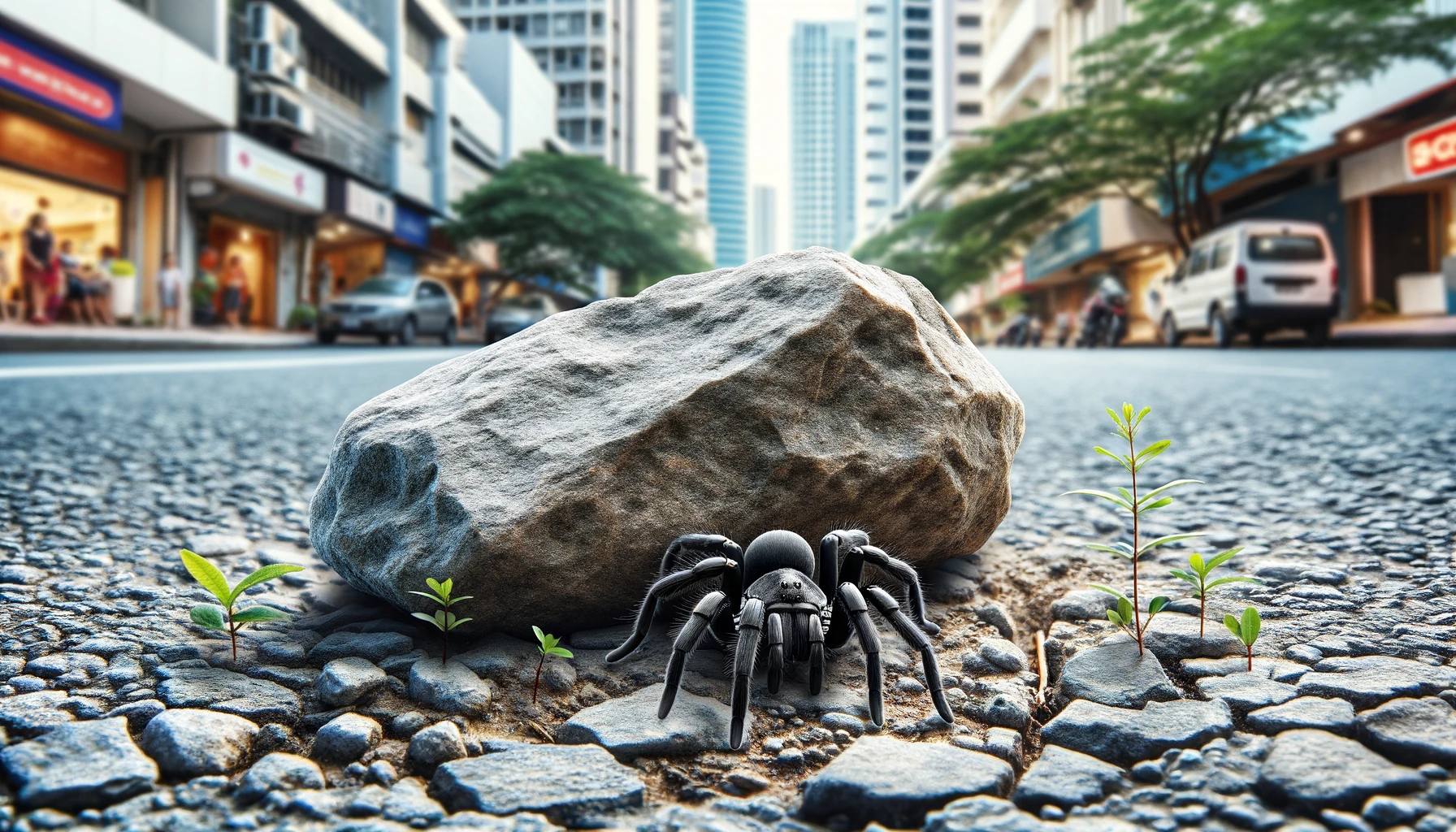Black house spiders are a topic of great interest to both arachnologists and the general people, frequently provoking a mixture of curiosity and anxiety. Concerns over their adaptability and interactions with human settings have been raised by their presence in metropolitan areas. The habitat, habits, and effects of black house spiders living in urban areas are examined in this article.
Key Takeaways:
- Black house spiders are indeed common in urban areas.
- They prefer dark, secluded areas, often found in corners of windows, under eaves, and in garden sheds.
- These spiders play a beneficial role in controlling pest populations.
Table Of Content
- Introduction
- Habitat Preferences
- Interaction with Urban Environments
- Benefits to Urban Biodiversity
- Identifying Black House Spiders
Habitat Preferences
Black house spiders showed a remarkable ability for environmental adaptation. These spiders, which were once found to be abundant in natural settings like forests and the gaps beneath rocks, have managed to establish a stronghold in cities. Nesting places for them are the crevices and corners of structures and residences because they like dark, isolated spots.
Urban vs. Natural Habitats
| Environment | Description |
| Urban | Includes buildings, homes, and garden sheds. |
| Natural | Wooded areas, forests, and under rocks. |
Interaction with Urban Environments
Urbanization has created unique ecosystems for many species, including black house spiders. These environments offer ample food sources, such as insects, and shelter from natural predators. As a result, urban areas have seen an increase in black house spider populations.
Adaptation Strategies:
- Seeking Shelter: Black house spiders often enter homes seeking warmth and food.
- Web Construction: They build intricate webs in corners, window frames, and less-disturbed areas.
Benefits to Urban Biodiversity
Black house spiders contribute positively to urban biodiversity by controlling insect populations. Their presence can reduce the need for chemical pest control, contributing to a healthier environment.
Pest Control Role:
- Natural Predators: They feed on common urban pests, including flies and mosquitoes.
- Ecosystem Balance: By controlling pest populations, they help maintain ecological balance within urban areas.
Identifying Black House Spiders
Identifying black house spiders is crucial for understanding their role in our environments. These spiders are typically characterized by their dark coloration, ranging from dark brown to black, and their velvety appearance. The females are larger than the males and can reach sizes of up to 18mm in body length.
Visual Characteristics
- Color: Dark brown to black.
- Size: Females up to 18mm, males smaller.
- Web: Irregular, often found in secluded areas.
In Urban Areas: A Closer Look
Black house spiders are more common in urban areas than many might think. Their adaptability to human-altered landscapes has allowed them to thrive in close proximity to human habitation. Understanding their habits and characteristics can aid in coexisting peacefully with these misunderstood creatures.
Continuing with our exploration of black house spiders in urban areas, let’s delve further into understanding these creatures, their behavior, and the myths surrounding them. We’ve also sourced some informative videos to enhance our understanding and provide visual insights into the world of spiders.
Understanding Black House Spider Behavior
Black house spiders, like many urban-dwelling spiders, have adapted remarkably well to living alongside humans. Their ability to thrive in human-made structures is largely due to the abundance of prey and the relative safety from predators these environments provide. The intricate webs of black house spiders are not just marvels of natural engineering but also effective traps for various insects, helping control pest populations in and around our homes.
The Role of Black House Spiders in Urban Ecosystems
Black house spiders contribute significantly to urban biodiversity. Their predation on common pests not only helps control insect populations but also reduces the reliance on chemical pest control methods. Understanding and appreciating the ecological role of these spiders can lead to more sustainable living practices and enhance urban biodiversity.
Coexisting with Black House Spiders in Urban Areas
As we continue our exploration into the presence of black house spiders in urban environments, it’s crucial to address common concerns and questions that arise regarding these often misunderstood creatures. Their presence in our homes and workplaces can evoke curiosity and, for some, apprehension. Here, we’ll tackle some frequently asked questions, offer guidance on managing encounters with these spiders, and provide further resources for those interested in learning more.
Frequently Asked Questions (FAQs)
What Attracts Black House Spiders to Urban Homes?
Black house spiders are drawn to urban homes due to the availability of food (insects) and shelter. Homes provide a plethora of hiding spots and ideal web-building sites, such as window frames, eaves, and less-disturbed corners.
Are Black House Spiders Dangerous?
Black house spiders are generally not aggressive and will only bite if provoked. Their venom is not considered harmful to humans, causing at most mild symptoms. However, any spider bite can cause individual reactions; if concerned, seek medical advice.
How Can I Prevent Black House Spiders from Entering My Home?
Preventive measures include sealing cracks and crevices in walls and around windows and doors, installing screens on windows and vents, and keeping outdoor lighting to a minimum (as it attracts insects, which in turn attract spiders).
